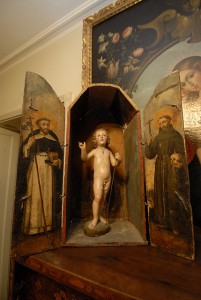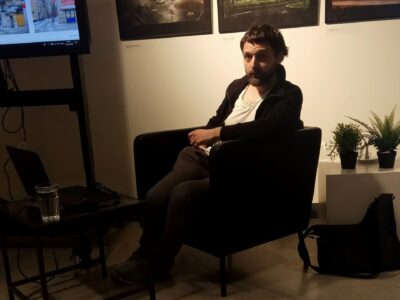All links lead to Spanish-language websites, unless otherwise noted.
The long colonial period that resulted in what we know today as Latin America, has left its traces in the colonial art still preserved throughout the continent. Citizen media attests to this. Many online spaces are dedicated to the sharing of photographs, video, texts, specific works and other examples of artistic expression from this period, at the same time explaining how these images today make up part of the landscape and identity of the countries they belong to. As one would anticipate, the images from each region show an enormous diversity in response to the inspiration that arrived from Europe.
We present here a sample of the many 2.0 websites dedicated to this colonial art, that serves as the common denominator adopted by indigenous cultures across most of the continent, before being adapted by each as its own.
The Portal de Arte (Art Gateway) from Colombia, provides us with a context for the definition of what is understood by the term Colonial Art:

Pontifical Catholic University of Chile. Reproduced under the Creative Commons licence
Este arte se caracteriza por la fusión de cosmovisiones y técnicas de conquistadores y aborígenes […] En cada pieza escultórica, catedral y pintura, los motivos religiosos son los gobernantes, así como los parámetros de representación europeos; pero éstos fueron sutil y subterráneamente “digeridos” por los aborígenes americanos, quienes colocaron en cada obra elementos propios de sus culturas (símbolos religiosos y espirituales, figuras antropomorficas, zoomorficas y fitomorfas) de modo tal que se entremezclaban con los imágenes católicas importadas, manteniendo de este modo, la voluntad de forma de la producción artística indígena subsitiendo [sic] por debajo del arte europeo impuesto a la fuerza.
In Ecuador, Iván Petroff shares some of his work, done for his studies in artistic expression, pointing us to some characteristic features of the colonial plastic arts:
La plástica colonial, al comienzo fue repetitiva, o mejor, recreativa de los modelos europeos, sin embargo, pese al control español, el artista indígena introdujo pequeños elementos de su arte y religión, especialmente en los rasgos físicos de los santos provincianos y en la carga cultural no europea de los retablos y algunos motivos ornamentales de capiteles y frisos.
In the same way, Iván uses his blog to open access to a musical piece from the epoch, placed on YouTube by denesago. The song was composed by the Spaniard Juan de Araujo, who was confirmed as one of the most important musicians of the colonial epoch in what is now Bolivia. The video images show something of baroque architecture and painting from Bolivia, Ecuador and Peru:
In Venezuela, Janeth Rodríguez manages a blog dedicated entirely to colonial art in Venezuela and its different expressive modes. The sources of her posts are various academic pieces, the principal motivation being to gather, celebrate and bring to people's attention the preservation of these pieces:
Este blog nace con varios objetivos: difundir nuestro patrimonio artístico de los siglos XVI al XVIII con la intención de promover su preservación; servir de vehículo para promocionar la investigación que los estudiantes de la Escuela de Artes de la Universidad Central de Venezuela producen en torno a este tema; y lograr una comunicación más efectiva entre todos los interesados en el mundo colonial.Nuestra meta es presentar a los visitantes una breve historia de diversas obras de arte venezolanas, e incluso de algunas extranjeras que llegaron a nuestro territorio durante ese período.
Meanwhile, the blog Romanticismo, launched by students of Spanish and Literature in the Colombian capital Bogotá, shares examples of the characteristic forms of literature from the colonial epoch:
La literatura en lengua española durante la colonia comenzó a desenvolverse en Nueva España desde un principio. La literatura de la conquista son mayormente coplas y romances, burlas hacia los gobernadores, ayudantes, etc. mientras que la de colonia son textos que incitan a la libertad y revolución.
Then there is Optimusomnium, which shows several examples of Peruvian painting of the colonial period in a video:
Finally, user LordArchibaldHartley gathers a number of artistic and cultural images that have served as the inspiration for much of the art made in Mexico today.
These are just a few of the many examples of sites offering information on colonial period art in Latin America in 2.0. If you'd like more information and to investigate other similar sources in the Spanish language, visit the Wikipedia article Arte colonial latinoamericano.






